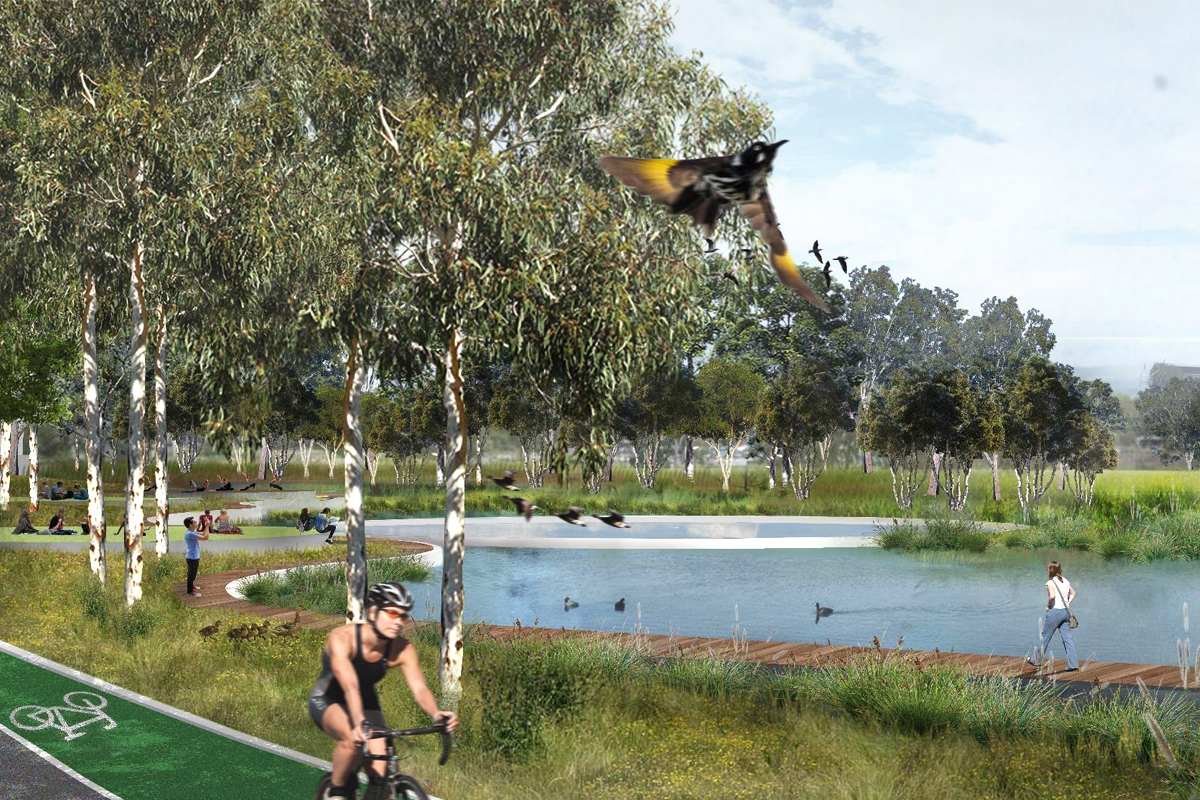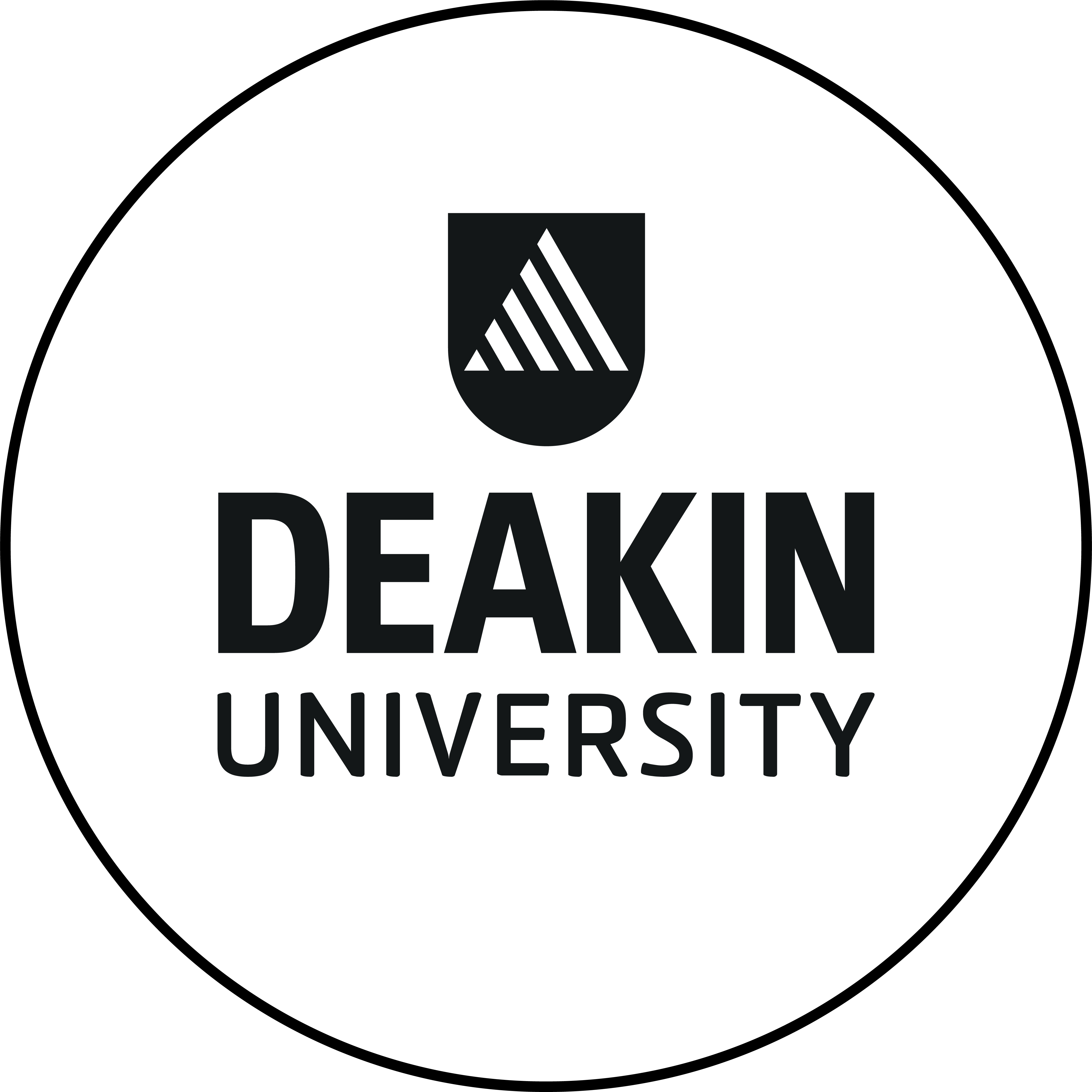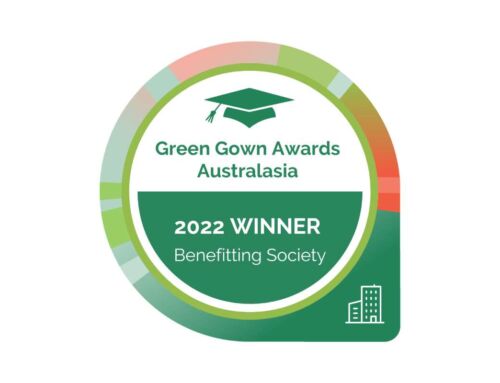Stream: Collaboration, Connection and Integration Reinvigorating a university campus through a resilient systems approach to IWM
Recognising the value of water in our urban landscapes as a finite and precious resource, Deakin developed an on-site Integrated Water Management Plan at our Waurn Ponds campus. The development of the plan commenced in 2020 and focuses on enhancing the existing drainage features on-site to deliver benefits spanning biodiversity, amenity and safety.
Consultant investigative and feasibility works have detailed a program of works to deliver key objectives including improved local water quality, amenity, and biodiversity, waterway stabilisation and improved ecology through the naturalisation and enhancement of existing features, and reduced flood impacts across the campus.
A number of major works are currently in design and delivery, notably the conversion of four existing water bodies to wetlands, water-sensitive landscaping and water metering.
> The initiative
The problem: Established in 1974, Deakin University’s Waurn Ponds campus is in a picturesque small valley at the base of the Barrabool Hills, on Geelong’s western outskirts. With rolling hills, a small creek and a park-like landscape, it seemed the perfect site for advanced learning in a natural setting. Fast forward almost fifty years, and the campus has continued to grow up the valley sides and is facing many severe water-related issues. It has an undersized stormwater and drainage network, experiences regular flooding of buildings, is highly reliant on drinking water for irrigation and requires booster pumping of the drinking water supply. With continued campus growth and expected climate impacts, all these issues were likely to be exacerbated in the future.
The solution: In mid-2020, staff from across critical campus departments participated in an IWM Planning process facilitated by Encader Consulting. The Plan was Deakin’s chance to get everyone to stand back and understand the bigger picture rather than focus on their problem in isolation. The foundation step involved developing a shared understanding of the water cycle system issues and establishing clear goals for system resilience aligned to the University’s broader strategic directions.
Recognising that these and other water-related issues pose current and future challenges, the Integrated Water Management Working Group developed a whole-of-campus Integrated Water Management (IWM) Plan. The scope of the Plan includes:
- consumptive water use, including potable and alternative water sources
- sewerage
- stormwater, drainage and flooding
- Waurn Ponds Creek and tributaries
- water in the campus landscape
- social values of water, particularly Wadawurrung Traditional Owner values and community awareness
- economic values, particularly the links between the water cycle system and the University’s teaching and research
The second step involved the discovery of a spectrum of options to address each issue, options assessment, screening and co-design of options portfolios. Specialist consultant teams were engaged to audit, model, report and recommend actions for the following key components: class A recycled water; flood mitigation; landscape framework; sewer; stormwater; metering; and existing water pressure.
The third step involved developing the actions and presenting the IWM Plan. The final step involved implementation of the Plan, including securing endorsement across all levels, setting priorities, allocating resources and assigning responsibilities for action.
The result: Since endorsement in late 2020, Deakin has successfully implemented many of the priority actions identified in the Plan, including Stormwater Management, Flood Mitigation, and a Landscape Master Plan. The Plan also helped Deakin secure funds to convert the central stormwater chain of ponds into ecological stormwater treatment wetlands and to supply Class A Recycled Water for irrigation needs. Key areas of assessment and knowledge development have included: arboricultural impact assessments, cultural heritage assessments; fauna management; and stormwater strategy. Developing the Plan was a collaborative journey that helped transform how people viewed these complex issues and tapped into the shared desire to create a campus landscape that everyone could be proud of and enjoy.
> Environmental and social benefits
The environmental and social benefits and outcomes of the IWM project include:
- ‘People-oriented processes to drive collaboration needed between multiple entities to achieve public-good outcomes for the water cycle system’
- Multiple entities working together across traditional portfolio boundaries
- Integrated planning and approaches are required to solve complex/ cross-cutting issues
- Shared responsibility for an outcome, including risks and rewards Deakin’s water system challenges met these criteria
- Opportunity for greater emphasis on biodiversity improvements and impacts, specifically a focus on the reintroduction of bird and frog populations
- Environmental: leaving more water for healthy river flows and reducing stormwater pollution
- Liveability: creating green open spaces, reducing the heat island effect and minimising flooding
- While mentioned above, long-term resilience is both an important economic and environmental benefit
- Increased understanding and engagement with Traditional Owner’s through IWM Plan creation and subsequent projects
Increase campus communities’ understanding of real-life sustainability challenges by seeing IWM in practice.
> Leadership and engagement
- Working effectively and collaboratively with industry experts, water authority, Traditional Custodians and local community on highly-complex sustainability challenges (internal, external, consultants, Partnerships).
- Implementation of IWM planning on a precinct level- an exemplar of what can be achieved on a larger scale e.g. for a city, town, or area.
- Rather than just upsizing stormwater infrastructure, Deakin has implemented water-sensitive urban design principles to create a whole-of-campus Stormwater and Drainage Plan would be based on WSUD principles.
- Aim to ensure no net increase in runoff from new developments to the existing stormwater and drainage network ensuring that all new development is subject to the specifications of the Stormwater and Drainage Plan.
- Creating specific tools to operationalise this, including development zone maps, functional design specifications, and a formal mechanism for applying IWM in infrastructure planning and design.
> Significance to the sector
The significance of this project is the holistic campus approach and application of WSUD Principles. It is also that we engaged with the Wadawurrung in relation to IWM Plan review, ensuring the plan took into account identified “values” and “threats” as outlined in the Wadawurrung Healthy Country Plan, and we now have regular meetings regarding IWM and sustainability-related projects as a result. Learnings have been shared within Tertiary Sustainability Network and ACTS forums, IWM regional forums and beyond.
> Wider societal impact
This project involves a review of the functions and values of campus wetland assets, an investigation of their effectiveness, and opportunities for improvement to provide multi-functional benefits to the Campus, the community, and the natural environment. This plan also includes maintenance and operational programs that could involve curriculum-based activities and or citizen science participation.
Protecting and enhancing biodiversity across its campuses is one of Deakin’s Sustainability Commitments. Both on-campus and neighbouring waterways are included in the assessment of the current and future health of water catchment and supply. Much of the neighbouring Waurn Ponds creek is not within Deakin’s management control, so Deakin will continue to work collaboratively with the Corangamite Catchment Management Authority and local Field Naturalists Groups on specific activities to improve the creek conditions. This could include revegetation along the riparian zone to improve habitat quality and reduce sedimentation and or aquatic research opportunities. Also, this project is aligned with the University’s Natural Environment Sustainability Commitments and includes consideration of the planned biodiversity/wildlife corridors of the campus.
> Learner/Graduate employer impact
- Currently, PhD students are testing the water quality of wetlands, pre, during and post-construction.
- Collaborative projects with local water authority Barwon Water are in review including a smart sewer project.
- Ongoing potential fauna introduction.






